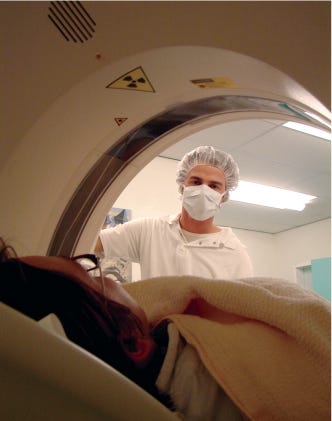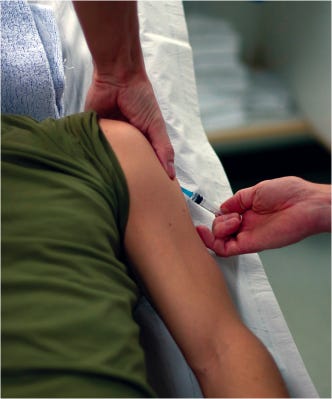A Vital Link
March 1, 2009

Clinical studies serve as a bridge between biopharmaceutical laboratories and the patients who need therapies. Drugs need to be tested in small populations before they are made available to the world at large. In a 2006 interview with BioProcess International, editorial advisor Michiel Ultee (vice president of Process Sciences for Laureate Pharma) said, “Until your product is tested in humans — and shown to be safe and to have some efficacy — then you really don’t have much of a claim, and you don’t really have high odds of making it to the marketplace.”
Clinical Research, Clinical Trials
Before human testing begins, companies file paperwork with the appropriate regulatory authorities. In the United States, an Investigational New Drug (IND) application is filed with the FDA through either its drug or biologics center (CDER or CBER). Elsewhere a variety of documents are filed with other agencies. In Europe, for example, a clinical trial application must be filed with the “Competent Authority” of the member state where a trial will be conducted. Required data are similar to those for the IND and submitted in common technical document format.
New Registry Requirements: Recent changes to the US clinical trial registry and results database requirements make them differ from existing US and international government and professional standards. These changes were enacted with the FDA Amendments Act of 2007 and are being implemented in phases through 2010. They are far-reaching, affecting all people involved in sponsoring or participating in clinical research that either is undertaken in the United States or will support any market application made to the FDA. Companies are finding it necessary to adapt to the new requirements and protect their intellectual property from disclosure, learn about potential markets, better communicate with the public about their products, manage adverse-event disclosures, anticipate and handle litigations, and ensure their own regulatory compliance.

REMCO FRANK (WWW.SXC.HU)
The full impact of the changes has not yet been explored — and will be in a session at the 2009 BIO International Convention. Not only compliance issues are raised, but also strategic considerations that may affect biotech companies’ intellectual property and ability to promote products and legally defend themselves. Session organizer Elizabeth Gobeil is a partner with Thompson Hine LLP. “As the new clinical trial registry requirements are being phased in,” she says, “stakeholders grapple with questions about compliance and the far-reaching implications of these new rules.” Her session is designed to educate those stakeholders and provide them with practical strategies to address the changes in an interactive format featuring FDA and industry leaders. Participants will learn the new registry requirements and see how they differ from other standards. They’ll also learn what risks and opportunities the new requirements present and discuss practical strategies for compliance and risk management.
“Given the economic turmoil of 2008–2009,” Gobeil continues, “it is more critical than ever that the life sciences industry attend the BIO International Convention. It provides an opportunity to stay abreast of the market and political changes, to ferret out business opportunities in the sea of economic uncertainty, and to take advantage of a ‘one-stop shop’ for business partnering.”
Adaptive Research and Targeting: So called “adaptive research” has been a major development in the pharmaceutical industry, offering companies a way to substantially reduce their product development timelines and cost. Few companies use the approach well, however, and most do not fully understand the principles or how to implement them. Even so, more and more clinical studies are using adaptive strategies.
Implementation is suboptimal when the focus is exclusively on statistical (design) issues. Adaptive strategies offer more benefits when a comprehensive approach includes operational aspects such as enrollment, query handling, resource allocation, and internal decision making. Unlike design adaptations, operational adaptations need no regulatory approval, so they can be rapidly and flexibly adopted. Because both design and operational adaptations use common technology, both should be considered. Each will strengthen the other, and together they can reduce development times more than either can alone.
Improved efficiency is a critical issue for every company, especially smaller and international companies for whom funding is an issue. Effective implementation of adaptive research will help money go further and programs go faster, and it may help companies decide when (or whether) a product should be licensed out for full development.
Michael Rosenberg, president and CEO of Health Decisions, Inc., is organizing a session on adaptive research at the 2009 BIO International Convention. “Hard economic conditions emphasize the need for agility and efficiency in clinical development,” he says. “Adaptive methodologies offer reductions of 10–25% in cost and timelines, improvements reflected in cash flow and NPV/IRR. This session will discuss the pragmatic aspects of design and operations needed to implement a high-velocity program, including process and decision-making changes.”
Other savings can be found in targeted site selection and patient recruitment, retention, and monitoring. In addition to the current economic troubles, biopharmaceutical companies are facing significant cost pressures due to patent expirations and payer demand for lower drug prices. Better selection, planning, and management of investigator sites and clinical study participants can improve cost efficiencies without affecting data quality.
Combining data on historical site performance with current prescribing information and/or patient demographics is important to help companies prioritize potential investigator sites. Once a site has been selected, supplementing site enrollment with performance-based recruitment strategies and registering patients in tracking services can also generate time and cost efficiencies with reduced administrative burdens at the site and fewer patients lost to follow-up.
An additional innovative strategy for generating efficiencies is to change from the model of using an on-site clinical research associate for monitoring to including a blend of on-site and centralized monitoring activities. When both approaches are used, the blended approach improves data quality. Patient registration with third parties may decrease the number of patients lost to follow-up and provide a mechanism to facilitate communication with them during clinical studies as well as allowing recontact after studies are complete.
Many of these innovative site prioritization, supplemental patient recruitment, patient registration, and alternative monitoring activities first emerged in phase 4 studies of classical drugs. So most biopharmaceutical companies (especially those without marketed products) are unaware of these options for cost and time efficiencies.
Enrolling trials is difficult, costly, and even competitive for industry sponsors. For study sites, trials are time-consuming and labor intensive but offer a way to be part of cutting-edge research. For patients, clinical trials offer hope and access to the most current therapeutic approaches, sometimes for diseases with limited options or no approved treatments available. But what happens when study sites participate in multiple trials for different products aimed at the same disease population? How does competition for enrollment affect a patient’s decision to participate in a trial? And how do clinical investigators and study staff educate patients about their options?
Clinical trials are becoming increasingly competitive for both rare and common diseases. As the number of study sites shrinks in the developed world, multiple studies are occurring at single sites, which can suggest conflicts of interest. Are investigators more likely to advocate one sponsored study over another to patients — even subconsciously? How can a patient know which is really the best study for his or her participation? And how can a sponsor know it can trust a study site to give it a fair shake?
RELATED SESSIONS AT THE BIO INTERNATIONAL CONVENTION
Clinical Research, Clinical Trials Sessions: Wednesday 20 May 2009
New Developments in Targeted Cancer Therapies
Improving Chronic Disease Management through the Convergence of Informatics in Research in Prevention/Epidemiology, Clinical Trials, and Clinical Care
Adaptive Research in Practice: Key Elements and Implications for Development
Generating Time and Cost Efficiencies Without Compromising Data Quality Through Targeted Site Selection, Recruitment, Retention, and Monitoring
Clinical Research, Clinical Trials Sessions: Thursday 21 May 2009
Clinical Trials for Novel Therapeutics: Challenges and Opportunities of Uncharted Waters
An Asia-First Strategy for Clinical Development of Therapeutic Drugs
Navigating the New Registry Requirements: Implications for Industry
Competing Clinical Trials: When Patients Have a Choice, How Do They Decide?
Translational Medicine Sessions: Tuesday 19 May 2009
Translational Medicine: Taking Policy into Practice
Stem Cells: Translating Exciting Preclinical Data into Human Clinical Trials
Translating Promising Science to CNS Treatments
Nurturing Hatchlings: New Industry Models for Supporting Innovation
For complete session information, visit http://convention.bio.org.
Jayne Gershkowitz, director of public policy and patient advocacy at Amicus Therapeutics, Inc., is organizing a session at 2009’s BIO International Convention to address these questions. “Competition for trial accrual is more difficult than ever domestically,” she says, “and that competition is increasing internationally. With resources becoming more dear, it’s most important to understand what motivates patients to participate in a clinical trial, especially when they have a choice.” Her session will offer insights from principal investigators on selecting one or multiple sponsors with which to conduct clinical research as well as on the motivating factors for patients. Gershkowitz explains, “This information should assist sponsors in how they consider trial design, communication and outreach to study sites and staff, education to patient communities, and adjusting expectations regarding accrual and ongoing study progress and key opinion-leader relationships.”
And she points out, “In what we know is and will continue to be a challenging year for our industry, the range of information, resources, and idea sharing that BIO offers should prove more valuable than ever. New perspectives can only help us all make it through this difficult time.”
Asia First? Offshore clinical development may be a viable strategy for testing drugs at reduced cost without compromising patient safety. China and India have become viable destinations for all players in the biotech industry, from drug-discovery companies to large drug developers. For emerging biotechs in particular, however, the focus has been on preclinical development and manufacturing. Despite sizable patient populations and favorable economics, these countries have yet to draw a corresponding fraction of clinical development activities.
Christian Cortis of Advanced Technology Ventures is organizing a session on this topic at 2009’s BIO International Convention. “Escalating clinical development costs represent a major obstacle to continued growth of the biotech industry,” he says. “Safe and clinically active compounds are being shelved for lack of partners or investors willing to fund the last stages of development through registration. Offshoring clinical development work, wherever possible, should be part of a comprehensive strategy to control product development costs. Anyone interested in addressing this problem may want to join this discussion in which we propose to explore associated issues and challenges. We hope the panel will provide a sense of what is possible, practical, and achievable — and what still requires societal or other large-scale changes to make the strategy a viable one for a small biotech.”

MARCUS OSTERBERG (WWW.SXC.HU)
Cortis adds, “The biotech industry is facing unprecedented challenges that are compounded by the exceptional market conditions prevailing today. The coming year will require all stakeholders to seek creative and truly innovative solutions to these challenges. This is the ultimate forum to meet and exchange ideas and launch new initiatives so that our sector can emerge stronger once growth returns to the world economy.”

MARCUS OSTERBERG (WWW.SXC.HU)
IN THE BIO EXHIBITION
As of press time, the exhibit hall product focus zones were only beginning to fill up. For updates, visit the BIO exhibitor floor-plan at http://convention.bio.org/vr/shows/bio2009/start.html.
The Clinical Trials Zone
Carefully conducted clinical trials are the fastest and safest way to move new medical treatments to market. Exhibitors here are suppliers who can help manage and fund clinical trials more effectively using the following: biomarkers and the FDA’s critical path, global product and disease registries, and clinical trial designs.
Exhibitors (as of 1 February 2009)ChemCon America, Inc. (Booth #5632), Datapharm Australia Pty Ltd (#5641), Fresenius Kabi Product Partnering (#5440), Fulcrum Pharma Developments, Inc. (#5441), Laureate Pharma (#5533), OCT Group (#5543), SIRO Clinpharm (#5741), and VBF Pharma (#5435)
One speaker at his session will be Darren Carroll, senior managing director for new ventures at Eli Lilly & Company. He elaborates: “As the costs of developing new molecules continues to soar, and the availablility of talented scientists remains a critical need, companies and investors need to look to Asia for new opportunities. More investors than ever are looking at Asian biotechs and service companies, and they need to be aware of both pitfalls and opportunities.”
Translational Medicine
Biotechnology began at the point of intersection between academia and industry — what’s now called the area of translational medicine. Organizations across the entire spectrum of healthcare are embracing this proven method to create better new medicines. Some biotechnology companies are themselves self-contained translational medicine organizations. This discipline provides the true basis for drug development: creating promising new medicines from scientific research.
The current economic climate is a difficult one for early stage ideas to become commercial realities. The pharmaceutical industry traditionally has been interested in less risky later-stage products. But start-ups provide promising programs to pump up dwindling industry pipelines. In return they obtain the necessary financial, regulatory, and legal support as well as increased visibility through affiliations with larger companies.
Lack of support for early stage programs remains the biggest translational hurdle for the industry. Promising research is simply not being translated into treatments for patients who could benefit. Big pharma offers supportive programs such as in-house incubators and creative collaboration, which may be the hottest new trend.
With pipelines of pharmaceutical companies becoming leaner, and the increasing complexity of discovering new drugs, more and more pharmaceutical companies are partnering closely with academic medical centers to better understand the biology of human disease. Academic medical centers are responding through research programs that help short-cut the drug discovery and development process. For example, those at the University of Pennsylvania in the United States, the University of Oxford in Great Britain, and the National University of Singapore are transforming the way biomedical research is carried out today. Their cadres of top physician-scientists, research, and clinical programs in innovative areas such as bioimaging, pharmacogenomics, and stem cells give them an ability to attract and work closely with the biopharmaceutical industry to provide proof-of-concept for novel medicines and the design of transforming clinical trials.
The academic discipline of investigational medicine, which both conducts clinical research and trains clinical investigators, will be critical for moving new drugs and devices through proof-of-concept studies into later-phase clinical trials.
You May Also Like





